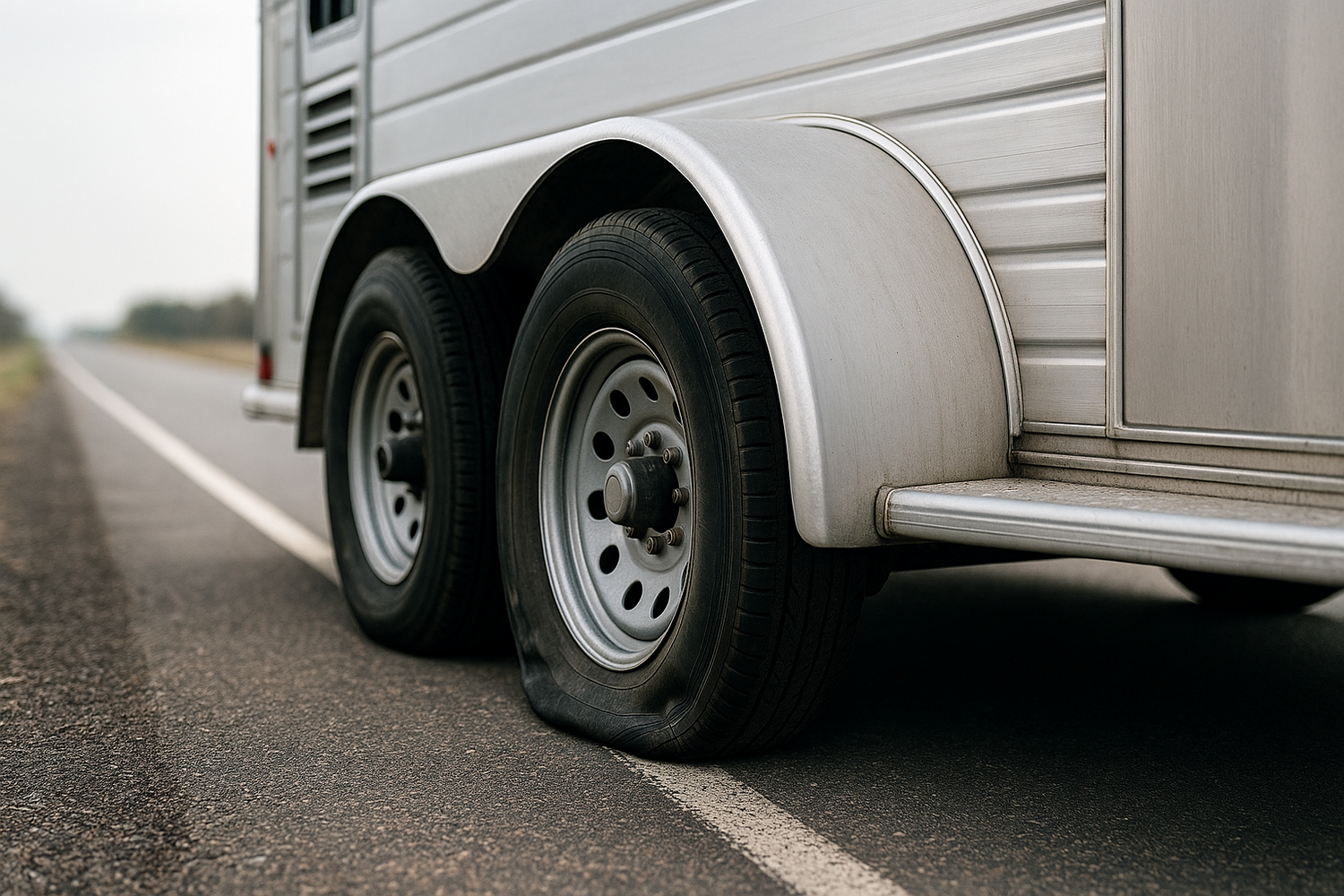Maintaining an optimal tire pressure in your 5th wheel trailer is crucial for ensuring safety and maximizing performance. A 5th wheel trailer tire pressure monitoring system (TPMS) serves as an essential tool that monitors the air pressure and temperature of your trailer's tires in real-time. This proactive approach helps prevent tire blowouts and enhances fuel efficiency, ultimately leading to a smoother towing experience.
These systems typically consist of sensors that are attached to each tire, which relay information to a display unit inside the towing vehicle. Key features of a TPMS include:
- Real-time monitoring: Allows you to keep track of tire conditions while on the road.
- Alerts: Notifies you of any irregularities in tire pressure or temperature.
- Data logging: Helps in analyzing tire performance over time, leading to better maintenance decisions.
Understanding how these systems work is vital for every trailer owner. By integrating a TPMS into your towing setup, you can significantly reduce the risk of unforeseen tire-related issues. Regular monitoring not only extends the life of your tires but also enhances the overall safety of your travel.
Tow with peace of mind, knowing that trailerwatchdog is standing guard.
Importance of Maintaining Proper Tire Pressure

Maintaining proper tire pressure is not just a matter of convenience; it is a critical factor that plays a significant role in the overall safety and performance of your 5th wheel trailer. Tires that are either under-inflated or over-inflated can lead to a range of issues that compromise both the stability of the vehicle and the comfort of the ride.
Here are several reasons why maintaining proper tire pressure is essential:
- Safety: Inadequate tire pressure can increase the risk of blowouts, especially when towing heavy loads. Properly inflated tires ensure better grip on the road, reducing the chances of losing control.
- Fuel Efficiency: Tires that are inflated to the correct pressure reduce rolling resistance, which can lead to better fuel economy. This means more savings on gas during long trips.
- Tire Longevity: Consistently maintaining the recommended tire pressure can significantly extend the life of your tires. Under-inflation causes excessive wear on the outer edges, while over-inflation can lead to center wear.
- Improved Handling: Proper tire pressure ensures that your trailer handles more predictably, especially during turns and emergency maneuvers.
Ultimately, the importance of maintaining proper tire pressure cannot be overstated. It not only enhances safety and performance but also helps you save money in the long run by prolonging the life of your tires.
How Tire Pressure Affects Trailer Performance

The relationship between tire pressure and trailer performance is often overlooked, yet it holds significant implications for both safety and efficiency. Understanding how tire pressure impacts your 5th wheel trailer can help you optimize its performance and ensure a smoother towing experience.
When the tire pressure is maintained at the manufacturer's recommended levels, several positive outcomes occur:
- Stability: Proper tire pressure enhances the stability of your trailer on the road. When tires are inflated correctly, they maintain their shape under load, allowing for better weight distribution and less swaying, which is crucial while towing.
- Braking Performance: Tire pressure directly affects how well your trailer can stop. Under-inflated tires may lead to longer stopping distances, increasing the risk of accidents in emergency situations.
- Traction: Adequate tire pressure ensures optimal contact with the road surface. This improved traction is vital for maintaining control, especially in adverse weather conditions such as rain or snow.
- Overall Performance: Correct tire pressure contributes to uniform tire wear, which not only enhances handling but also improves fuel efficiency. This optimization allows for a more responsive driving experience, making long journeys less taxing.
In summary, maintaining the right tire pressure is essential for maximizing your trailer's performance. By keeping your tires properly inflated, you can ensure a safer, more efficient towing experience.
Features to Look for in Tire Pressure Monitoring Systems

When selecting a tire pressure monitoring system (TPMS) for your 5th wheel trailer, it's crucial to consider a variety of features that enhance functionality and usability. A reliable TPMS not only provides real-time data but also supports long-term maintenance and safety.
Here are some key features to look for when choosing a TPMS:
- Real-Time Monitoring: The system should provide continuous monitoring of tire pressure and temperature, allowing you to detect any irregularities immediately. This feature helps in preventing potential blowouts or other tire-related issues.
- Alerts and Notifications: An effective TPMS should include audible and visual alerts to notify you of any pressure drops or temperature spikes. Early warnings can make a significant difference in avoiding accidents or damage to your trailer.
- Ease of Installation: Look for systems that offer simple installation processes, ideally without the need for special tools. Wireless systems are particularly advantageous for easy setup.
- Battery Life: Consider systems with long-lasting batteries, as frequent replacements can be inconvenient. Some models even offer solar-powered options.
- Durability and Weather Resistance: The TPMS should be built to withstand various weather conditions, making it suitable for all types of towing environments. Look for systems that are water-resistant and can withstand extreme temperatures.
By focusing on these features, you can choose a tire pressure monitoring system that not only enhances the safety and performance of your 5th wheel trailer but also provides peace of mind during your travels.
Installation Guide for Tire Pressure Monitoring Systems

Installing a tire pressure monitoring system (TPMS) on your 5th wheel trailer is a straightforward process that can be accomplished with minimal tools and experience. Proper installation ensures accurate readings and reliable performance, making it essential for maintaining your trailer's safety and efficiency.
Follow these steps to successfully install your TPMS:
- Gather Necessary Tools: Before starting, ensure you have all the required tools handy. Typically, you will need a wrench, a screwdriver, and the installation manual that comes with your TPMS.
- Prepare the Sensors: Many TPMS kits come with sensors that need to be attached to each tire's valve stem. If your system requires programming, refer to the manufacturer’s instructions to set up the sensors before mounting them.
- Attach Sensors: Carefully remove the valve stem caps from each tire and install the sensors. Make sure they are securely fastened to avoid leaks. It’s advisable to use a torque wrench to ensure the sensors are tightened to the manufacturer’s specifications.
- Install the Display Unit: Position the display unit in a location that is easily visible while driving. Most systems allow for mounting options on the dashboard or windshield. Ensure that the display unit is securely attached and powered, either through batteries or a power source.
- Calibrate the System: Once everything is installed, turn on the TPMS and follow the calibration instructions provided by the manufacturer. This step is crucial for ensuring the system reads the tire pressures accurately.
- Test the System: After installation, conduct a test drive to ensure the TPMS is functioning correctly. Monitor the readings on the display unit and make sure you receive alerts for any abnormal tire pressures.
By following these installation steps, you will ensure that your tire pressure monitoring system is set up correctly, enhancing the safety and performance of your 5th wheel trailer on the road.
Best Practices for Regular Tire Maintenance
Maintaining the tires on your 5th wheel trailer is vital for ensuring safety, enhancing performance, and prolonging the life of your tires. Following these best practices for regular tire maintenance can help you avoid unexpected breakdowns and maximize your trailer's efficiency.
Here are some essential tire maintenance practices to incorporate into your routine:
- Regular Pressure Checks: Use a reliable tire pressure gauge to check the tire pressure at least once a month and before long trips. Ensure that the pressure matches the manufacturer's recommendations, adjusting as necessary. This helps improve fuel efficiency and tire life.
- Inspect Tread Depth: Regularly check the tread depth to ensure that your tires have adequate grip and traction. A simple way to do this is with the penny test: insert a penny into the tread with Lincoln's head down. If you can see all of Lincoln’s head, it’s time for new tires.
- Look for Damage: Routinely inspect your tires for any visible signs of damage, such as cuts, punctures, or bulges. Address any issues immediately to prevent further damage or tire failure.
- Rotate Tires: Rotate your tires every 5,000 to 8,000 miles to promote even wear. This is particularly important for trailers, as they often have a different weight distribution compared to regular vehicles.
- Maintain Proper Alignment: Ensure that your trailer is properly aligned to prevent uneven tire wear. Misalignment can lead to significant issues over time, so it’s a good idea to have it checked regularly.
- Store Properly: When your trailer is not in use, store it in a cool, dry place away from direct sunlight. This helps prevent the tires from degrading due to UV exposure.
Implementing these best practices will not only prolong the life of your tires but also enhance your overall driving safety. Tow with peace of mind, knowing that trailerwatchdog is standing guard.








